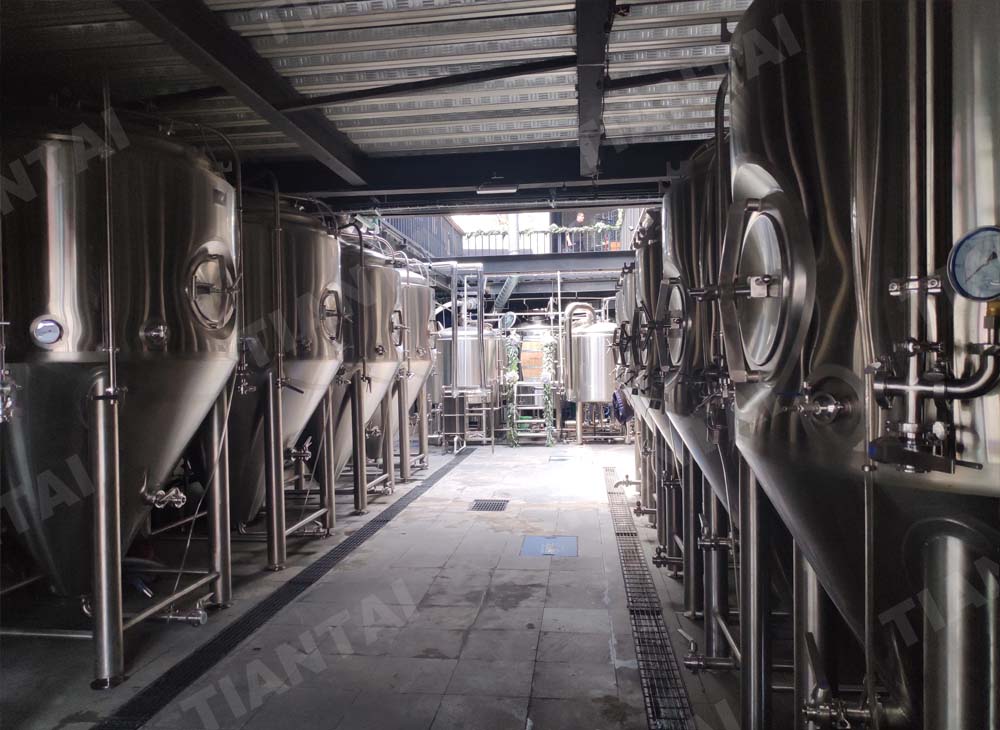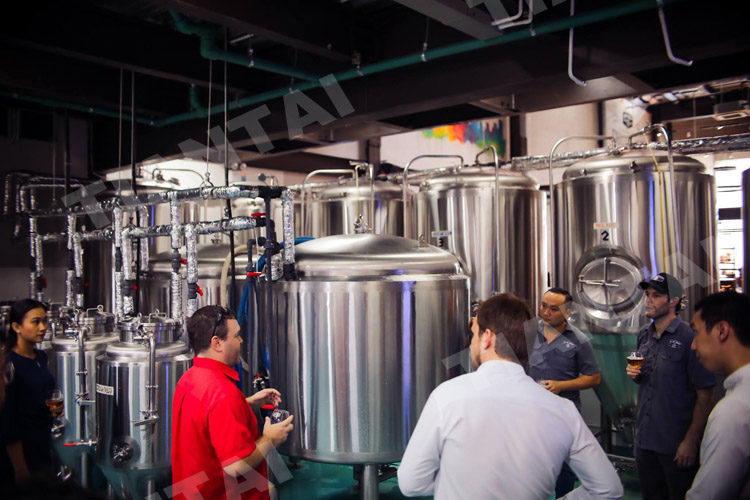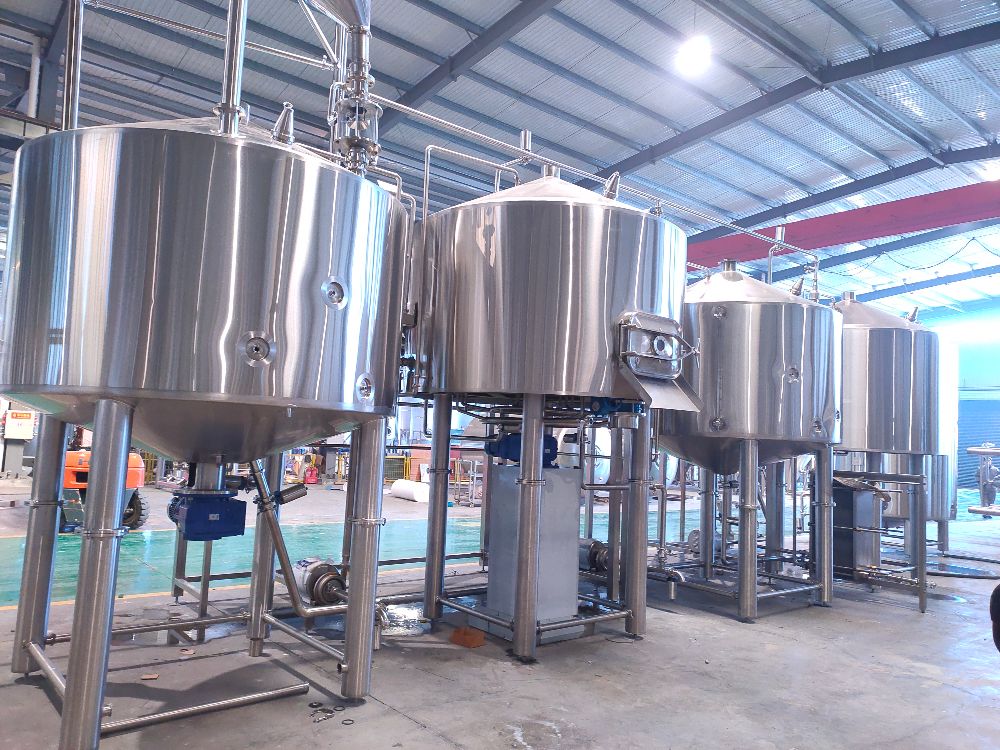What is Beer Gravity?
- Feb 26, 2022
- 66
- tiantai
A whole lot must be thought about when you open your brewery like craft developing technology, brewery equipment cost as well as rate, find a location for brewery, license and also law of a brewery. This post column is specially to discuss What is Beer Gravity?
You may have never listened to the term gravity as it relates to brewing; you're likely a lot more familiar with Newton's version. That gravity's awesome also-- it maintains beer in your glass and also everything from spinning off into room-- but possibly you've observed a gravity analysis on a beer label or tap listing and also not understood what it was.
A gravity reading describes the overall quantity of liquified solids in water, given that we're discussing beer, those dissolved solids are sugars. These sugars are eaten by yeast to transform the wort (unfermented components) into beer. It's read as a series of numbers that starts with the number one adhered to by a decimal to the thousandth area, something such as this: 1.052.
A gravity reading taken just before yeast being added, or pitched, is described as the original gravity (OG). The OG will offer the maker with a great concept of the possible alcohol percent for that certain beer. The OG of an imperial stout at 1.080 (read: ten-eighty) has even more sugar molecules to be transformed into alcohol than a common bitter at 1.032 (say it like this: ten thirty-two), this describes why the stout will certainly load extra alcohol (~ 8.0-12.0% ABV) than the bitter (3.2-3.8% ABV), and why much more malt is needed in the royal stout recipe than the normal bitter recipe.

The OG reading is extremely vital to the implementation of the brew and succeeding fermentation of the beer. Brewers will track the certain gravity (SG) for the duration of the process to make certain that the gravity levels stay consistent from one batch to the other which not a problem occur from the malt top quality, brewing process or yeast efficiency.
Just How Gravity is Measured
If you've ever acquired a homebrew starter package, you've likely received among other items, a clear plastic tube with an oversized thermometer-looking-deally (that's the last time, vouch) with incremental hash marks called a hydrometer. A hydrometer, also known as a saccharometer, is utilized to gauge SG as it compares to water, which has a SG of 1.000.
With a hydrometer reading of 1.052, the numbers to the right of the decimal (52) are the gravity systems (GU). As yeast functions to take in the sugar, the thickness of the wort is lowered, which triggers the hydrometer to supply an analysis closer to 1.000.
While gravity can be gauged on different scales-- Balling, Plato as well as Brix-- Plato (which has nothing to do with the philosopher) is commonly made use of by makers. On a beer tag, Plato is typically supplied together with the OG, right here's an instance: OG: 1.080|20 ° P. Notice that you can approximate Plato by taking 1/4 of the gravity systems.
Various fermentables-- rye, barley, honey, fruit, syrup, etc-- generate various increases in gravity, as a result of the differing quantities of fermentable sugar found in them. For example: two-row malted barley will not offer as big a rise in gravity as table sugar due to the fact that the table sugar is completely fermentable whereas two-row is not. Knowing the quantity of fermentable sugar in various ingredients permits brewers to figure out how much of each fermentable will certainly attain the desired OG of the beer.
A gravity reading refers to the overall amount of liquified solids in water, since we're speaking about beer, those dissolved solids are sugars. A gravity reading taken just prior to yeast being included, or pitched, is referred to as the initial gravity (OG). With a hydrometer analysis of 1.052, the numbers to the right of the decimal (52) are the gravity devices (GU).: two-row malted barley will not offer as large an increase in gravity as table sugar due to the fact that the table sugar is fully fermentable whereas two-row is not.
Laura Hou
Sales manager
Tiantai Beer Equipment
[email protected]
You may have never listened to the term gravity as it relates to brewing; you're likely a lot more familiar with Newton's version. That gravity's awesome also-- it maintains beer in your glass and also everything from spinning off into room-- but possibly you've observed a gravity analysis on a beer label or tap listing and also not understood what it was.
A gravity reading describes the overall quantity of liquified solids in water, given that we're discussing beer, those dissolved solids are sugars. These sugars are eaten by yeast to transform the wort (unfermented components) into beer. It's read as a series of numbers that starts with the number one adhered to by a decimal to the thousandth area, something such as this: 1.052.
A gravity reading taken just before yeast being added, or pitched, is described as the original gravity (OG). The OG will offer the maker with a great concept of the possible alcohol percent for that certain beer. The OG of an imperial stout at 1.080 (read: ten-eighty) has even more sugar molecules to be transformed into alcohol than a common bitter at 1.032 (say it like this: ten thirty-two), this describes why the stout will certainly load extra alcohol (~ 8.0-12.0% ABV) than the bitter (3.2-3.8% ABV), and why much more malt is needed in the royal stout recipe than the normal bitter recipe.

The OG reading is extremely vital to the implementation of the brew and succeeding fermentation of the beer. Brewers will track the certain gravity (SG) for the duration of the process to make certain that the gravity levels stay consistent from one batch to the other which not a problem occur from the malt top quality, brewing process or yeast efficiency.
Just How Gravity is Measured
If you've ever acquired a homebrew starter package, you've likely received among other items, a clear plastic tube with an oversized thermometer-looking-deally (that's the last time, vouch) with incremental hash marks called a hydrometer. A hydrometer, also known as a saccharometer, is utilized to gauge SG as it compares to water, which has a SG of 1.000.
With a hydrometer reading of 1.052, the numbers to the right of the decimal (52) are the gravity systems (GU). As yeast functions to take in the sugar, the thickness of the wort is lowered, which triggers the hydrometer to supply an analysis closer to 1.000.
While gravity can be gauged on different scales-- Balling, Plato as well as Brix-- Plato (which has nothing to do with the philosopher) is commonly made use of by makers. On a beer tag, Plato is typically supplied together with the OG, right here's an instance: OG: 1.080|20 ° P. Notice that you can approximate Plato by taking 1/4 of the gravity systems.
Various fermentables-- rye, barley, honey, fruit, syrup, etc-- generate various increases in gravity, as a result of the differing quantities of fermentable sugar found in them. For example: two-row malted barley will not offer as big a rise in gravity as table sugar due to the fact that the table sugar is completely fermentable whereas two-row is not. Knowing the quantity of fermentable sugar in various ingredients permits brewers to figure out how much of each fermentable will certainly attain the desired OG of the beer.
A gravity reading refers to the overall amount of liquified solids in water, since we're speaking about beer, those dissolved solids are sugars. A gravity reading taken just prior to yeast being included, or pitched, is referred to as the initial gravity (OG). With a hydrometer analysis of 1.052, the numbers to the right of the decimal (52) are the gravity devices (GU).: two-row malted barley will not offer as large an increase in gravity as table sugar due to the fact that the table sugar is fully fermentable whereas two-row is not.
Laura Hou
Sales manager
Tiantai Beer Equipment
[email protected]

.jpg)


